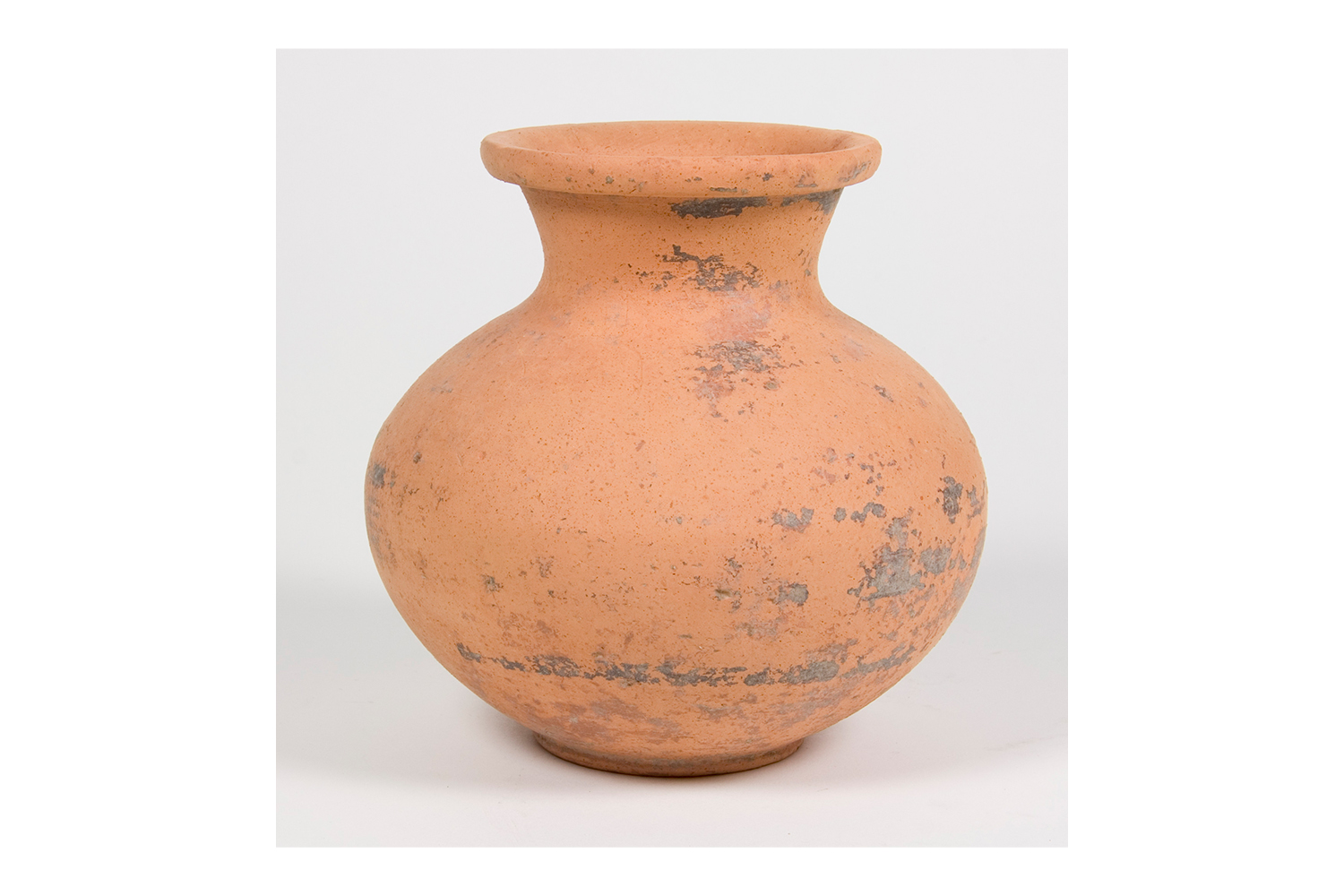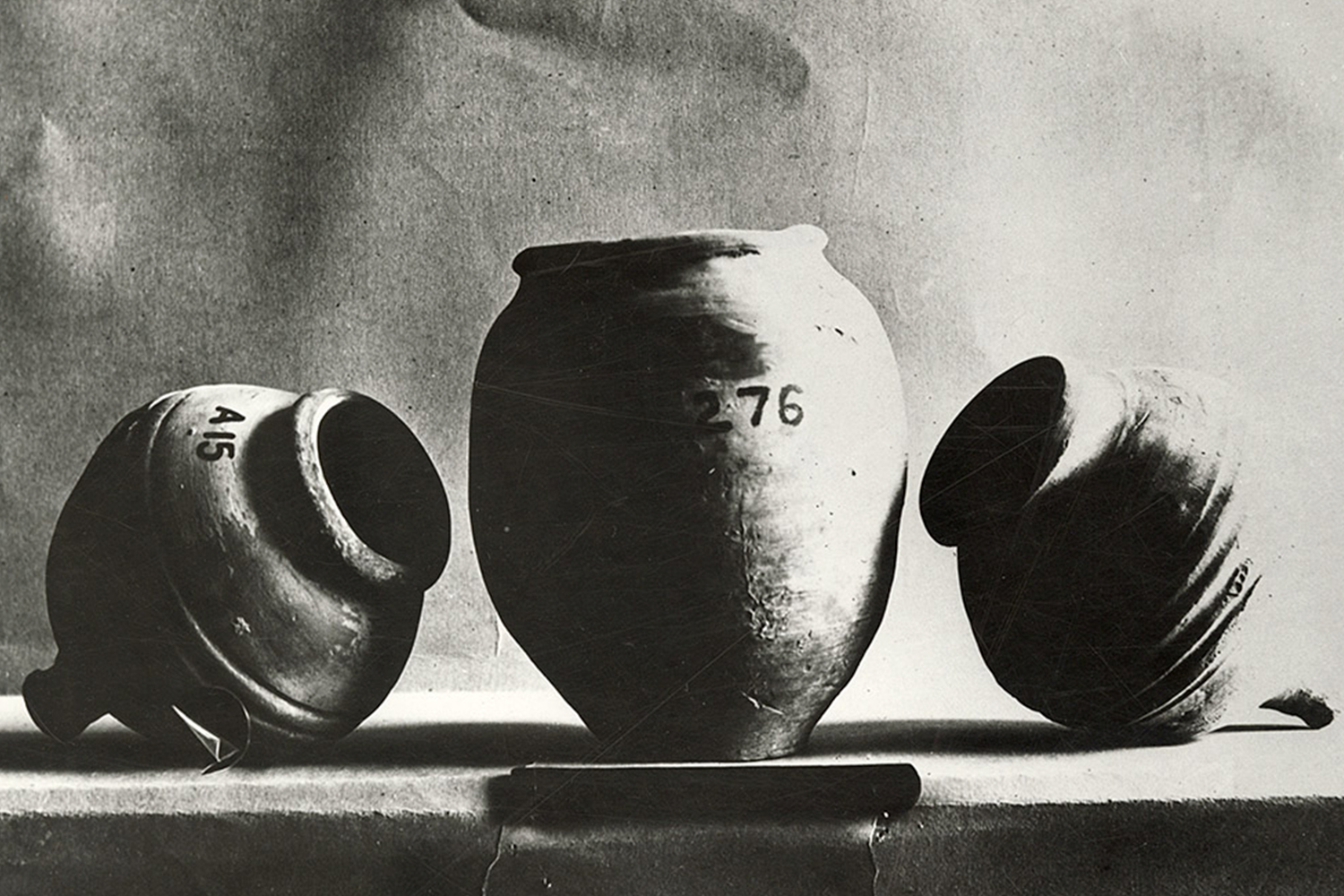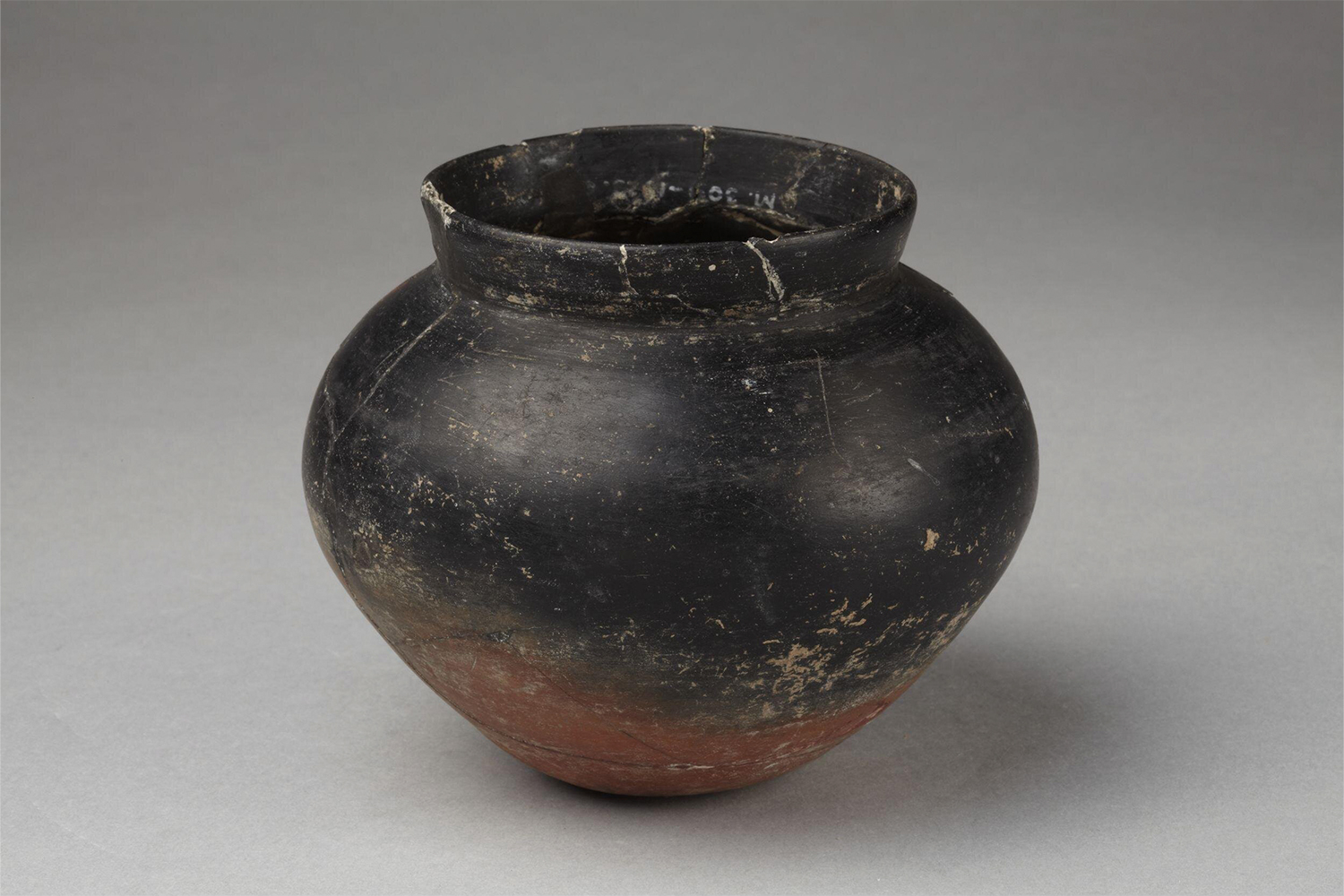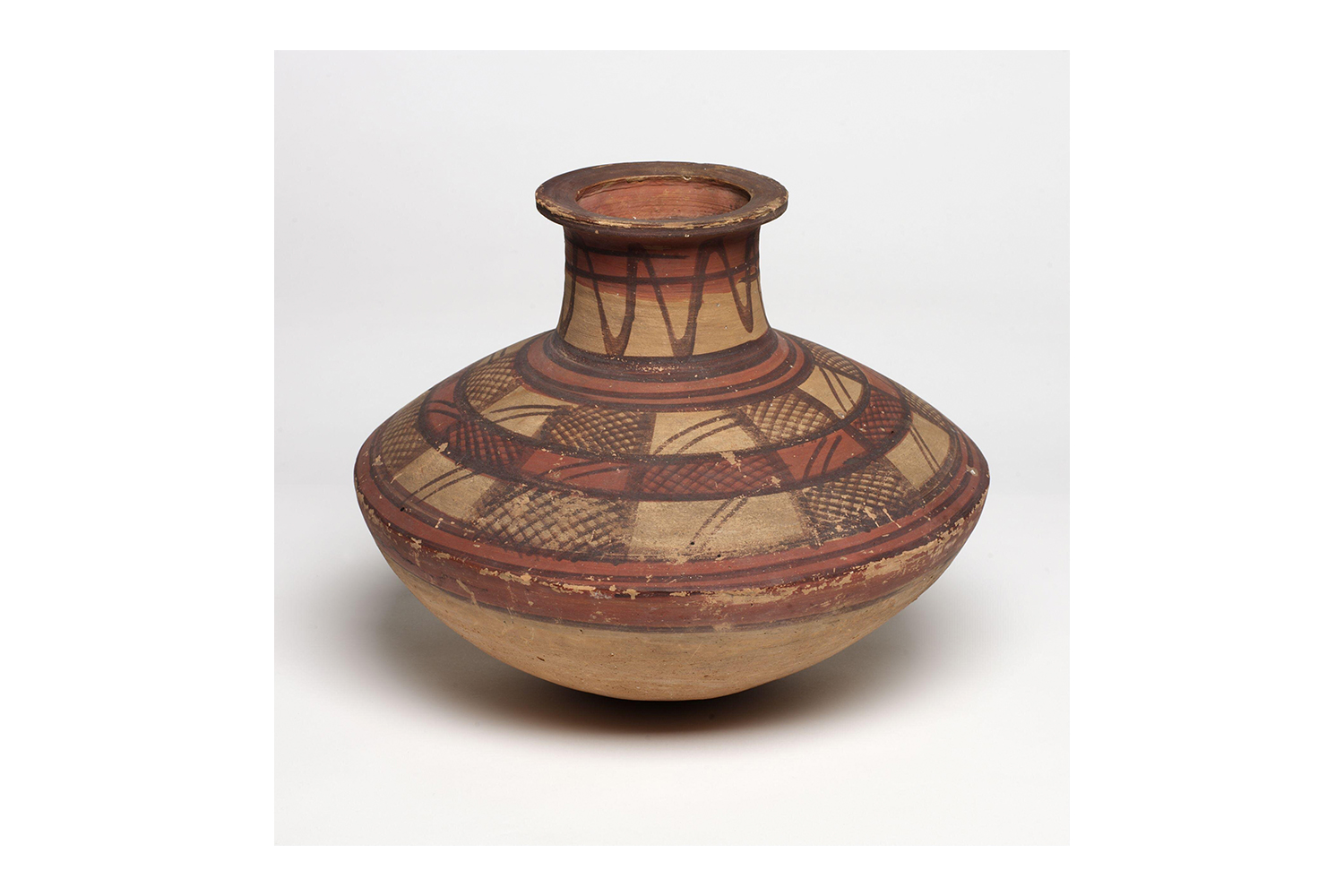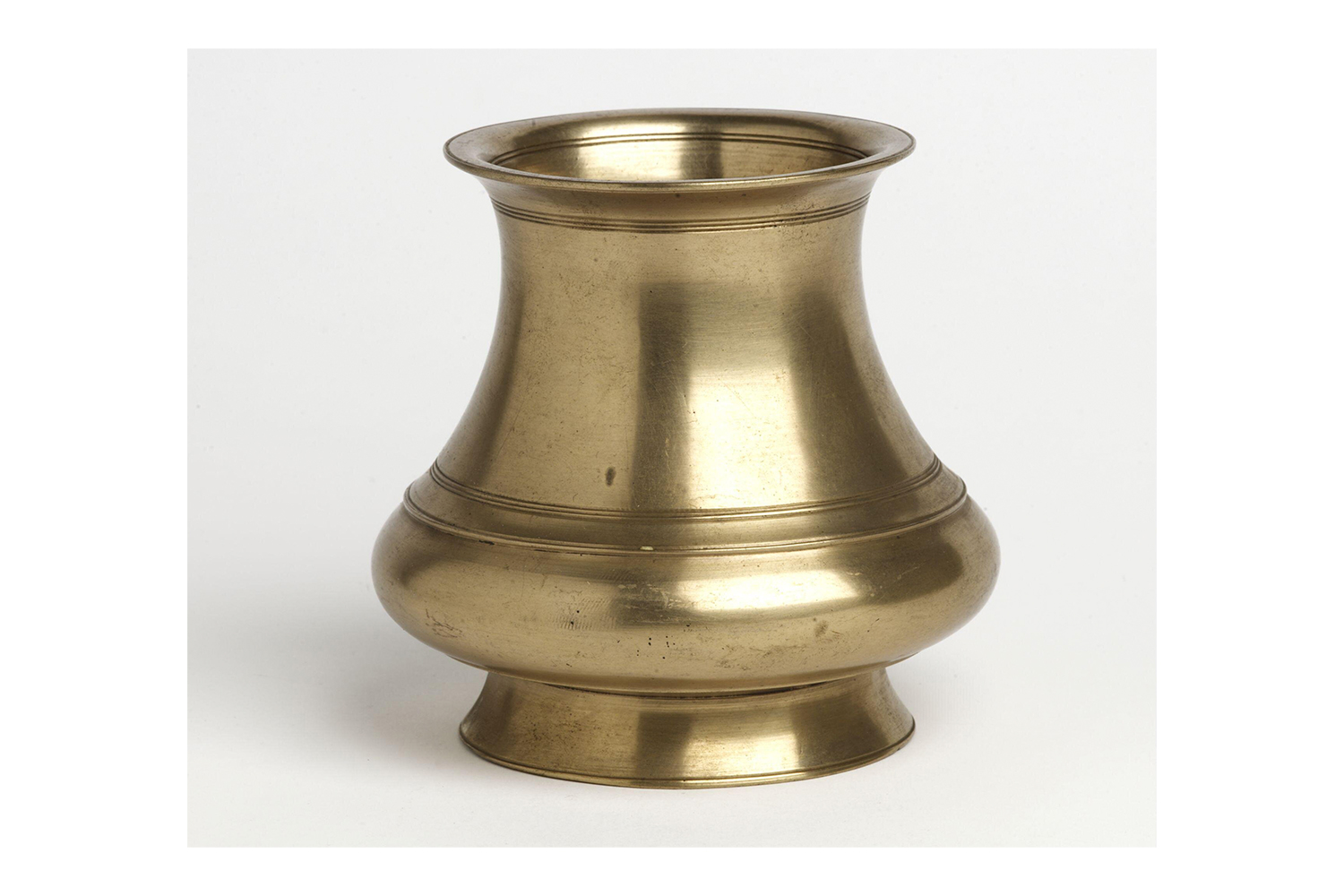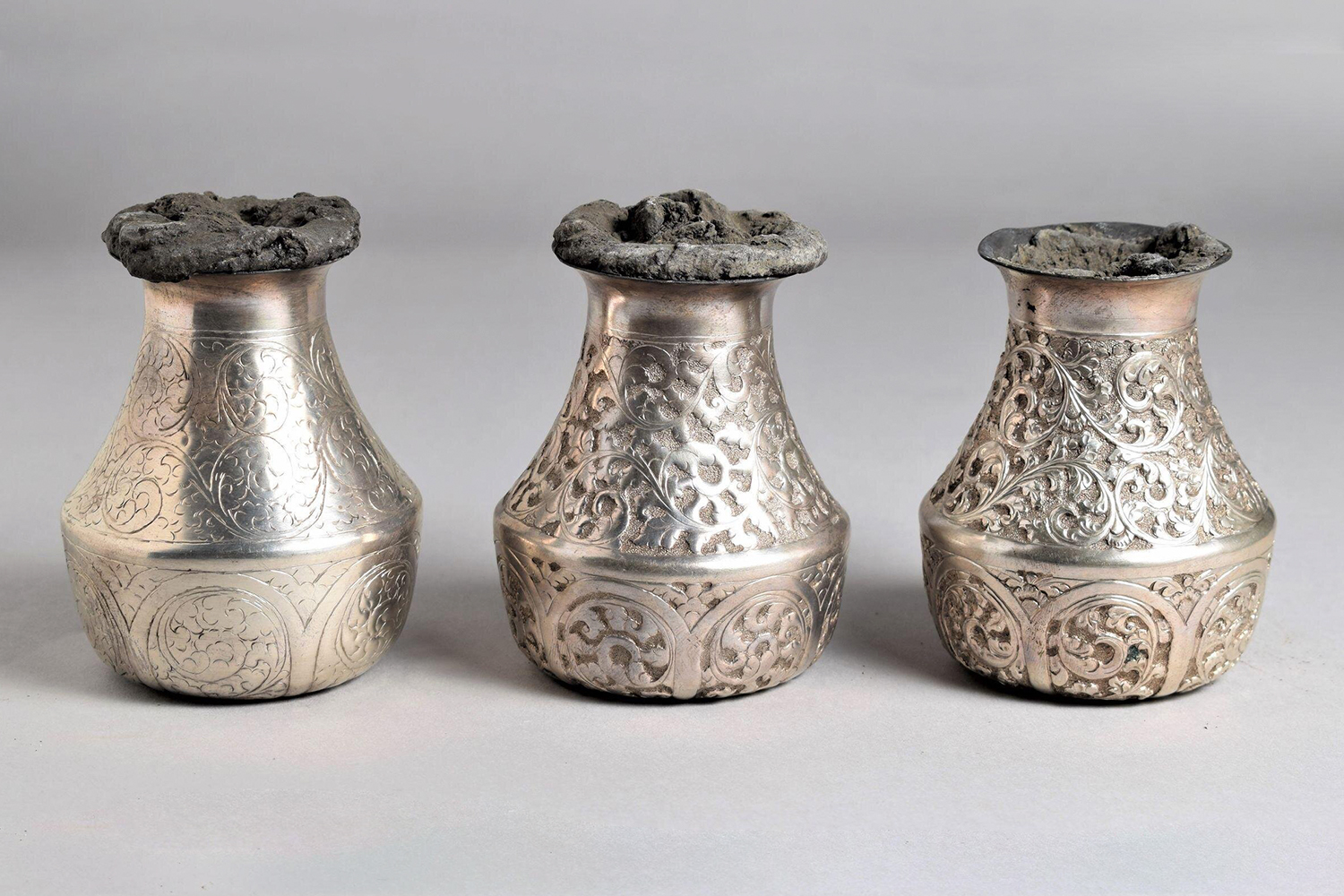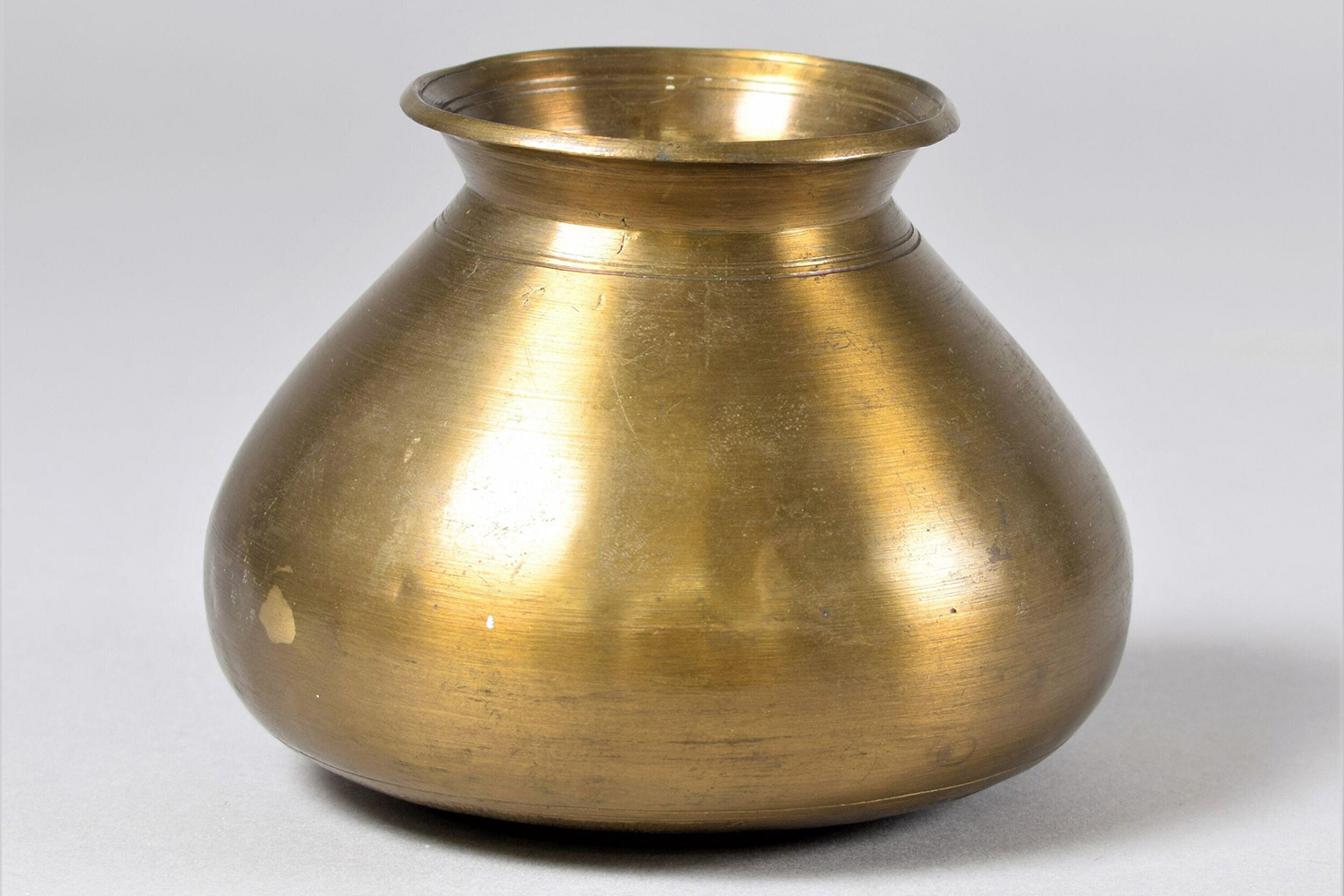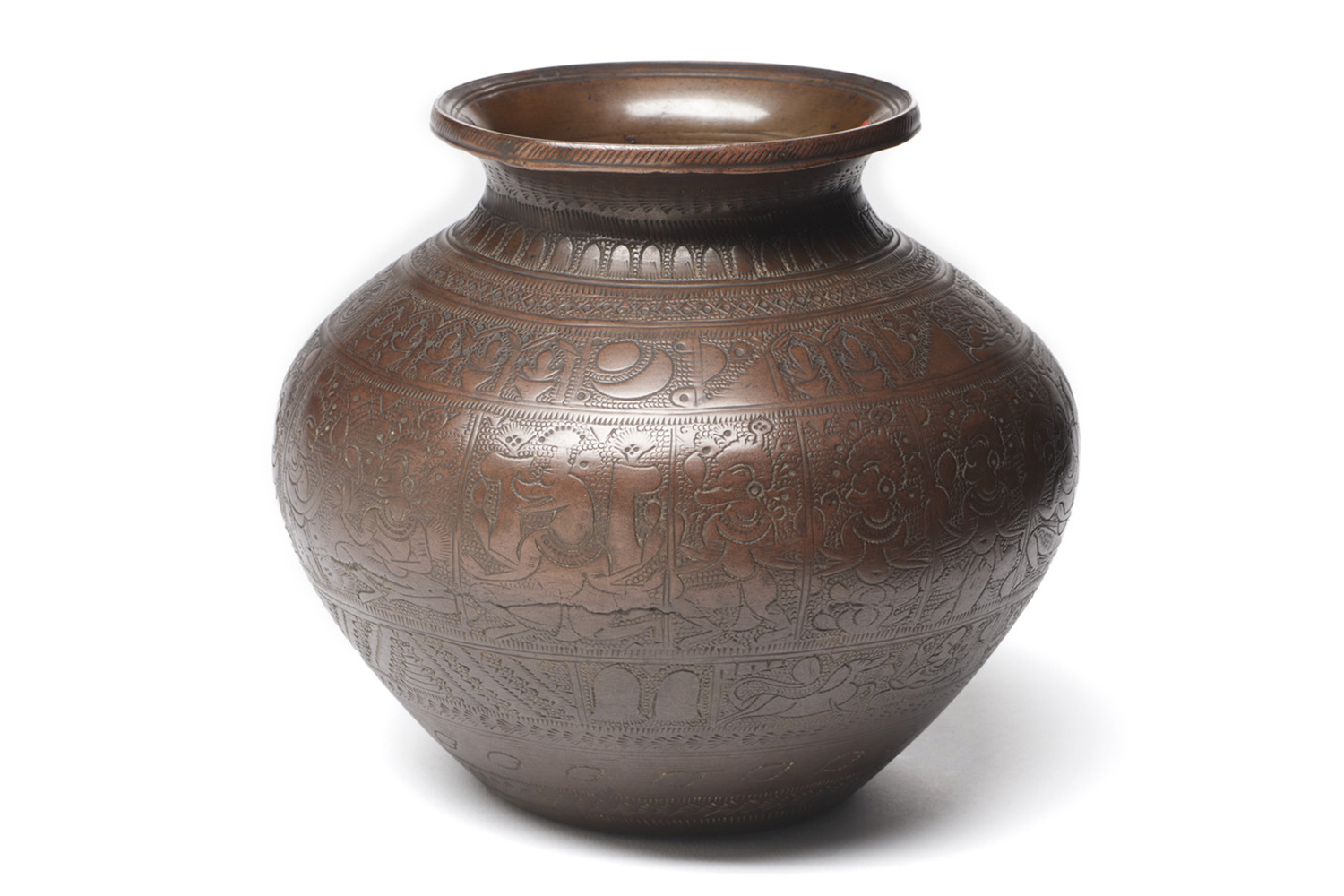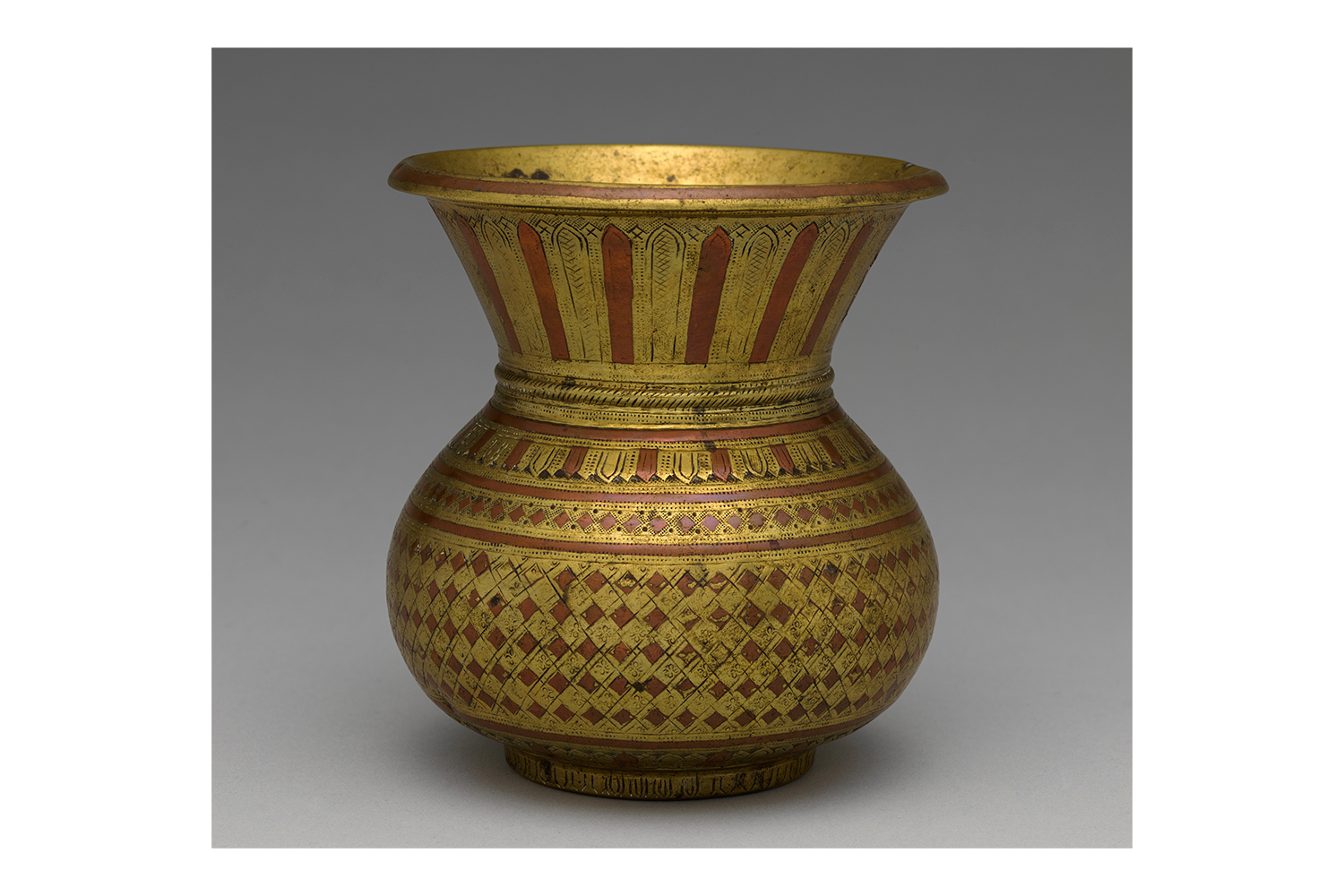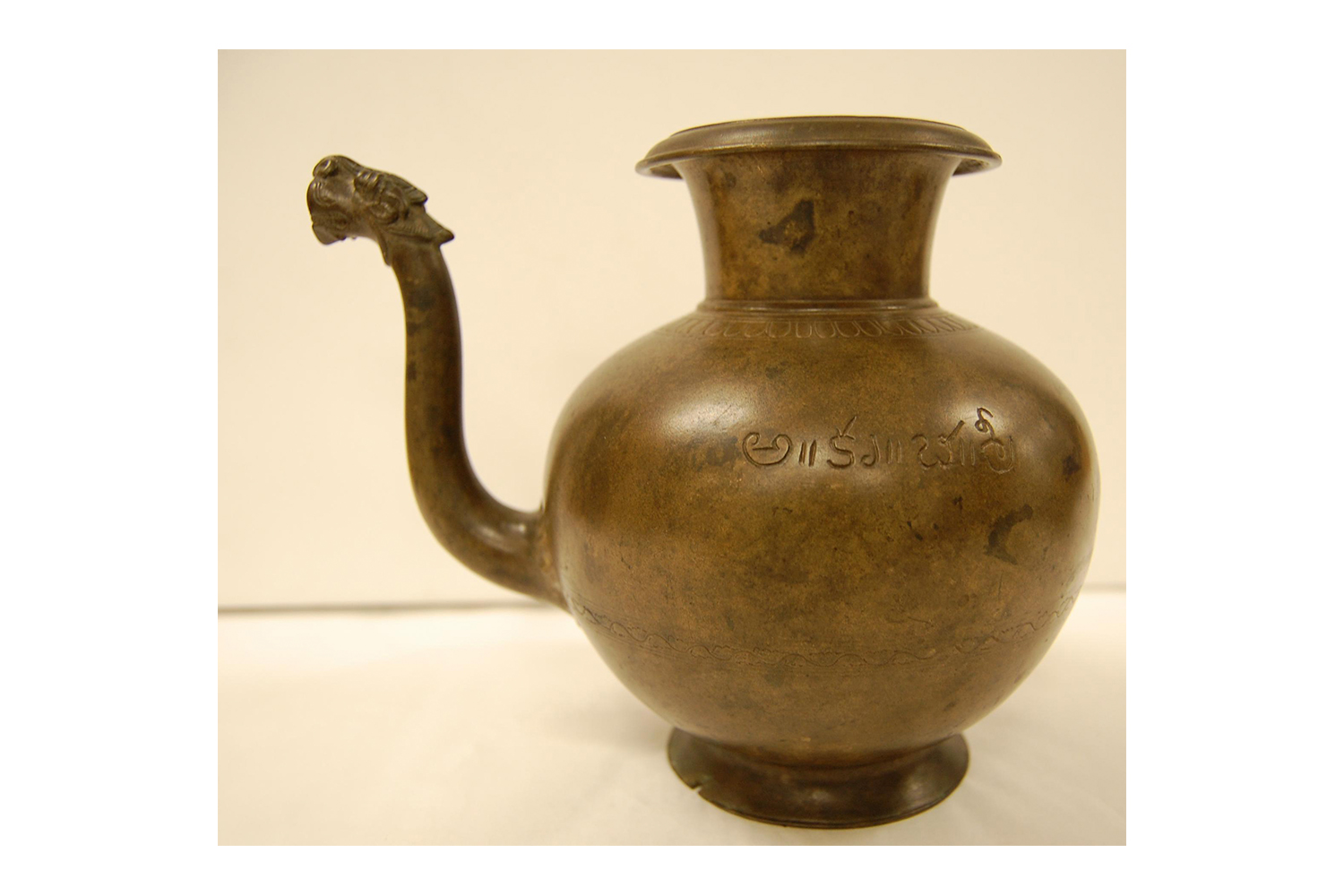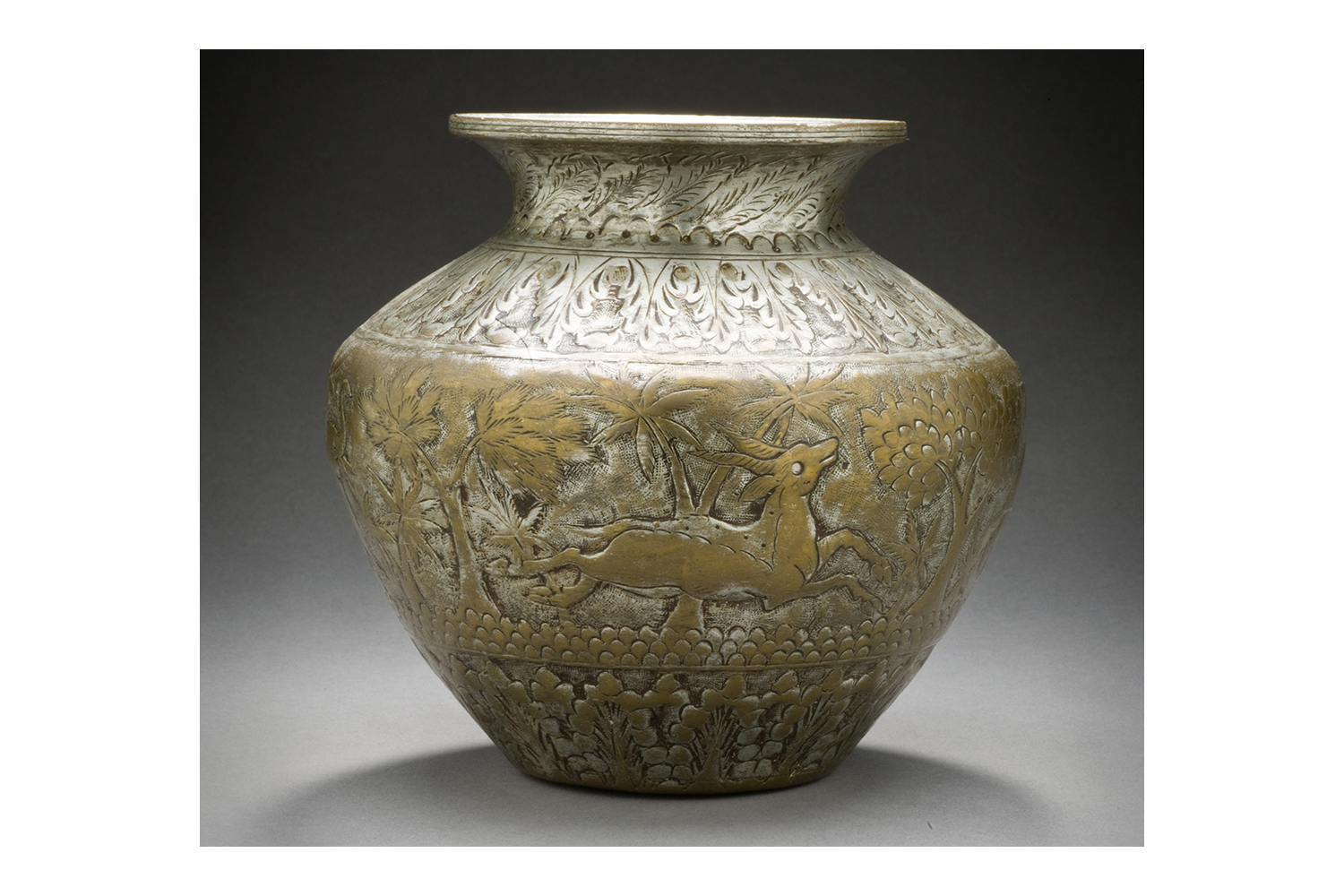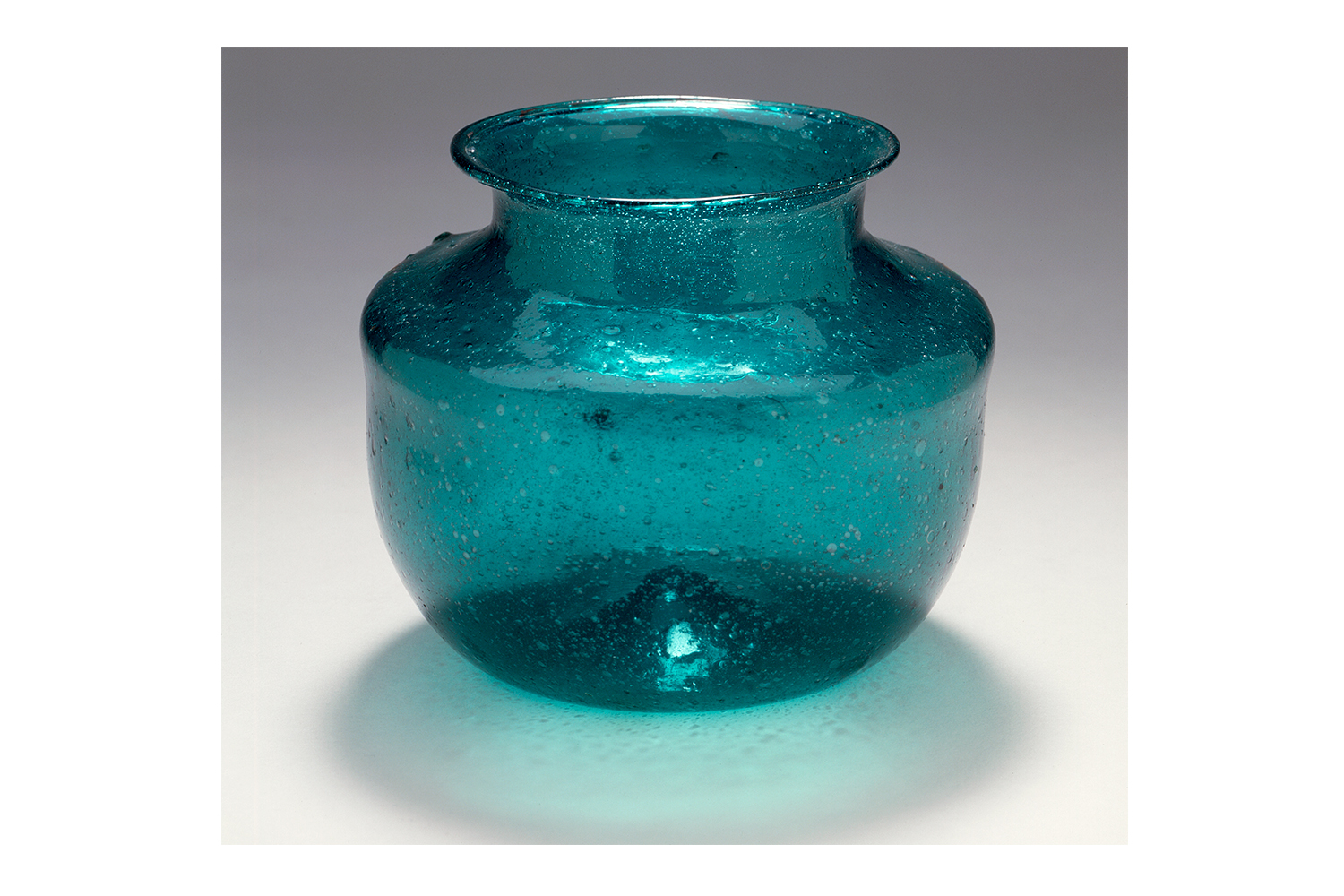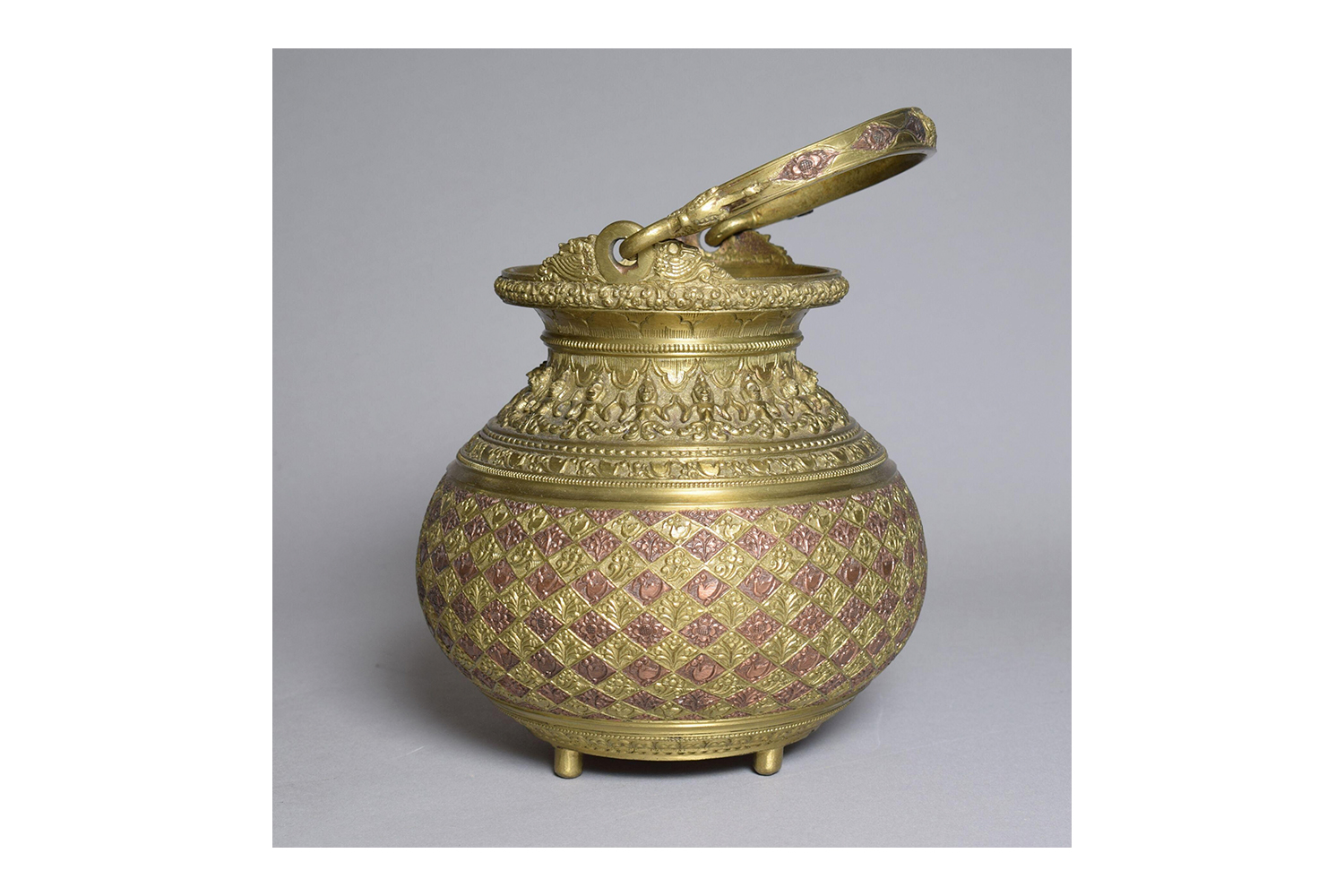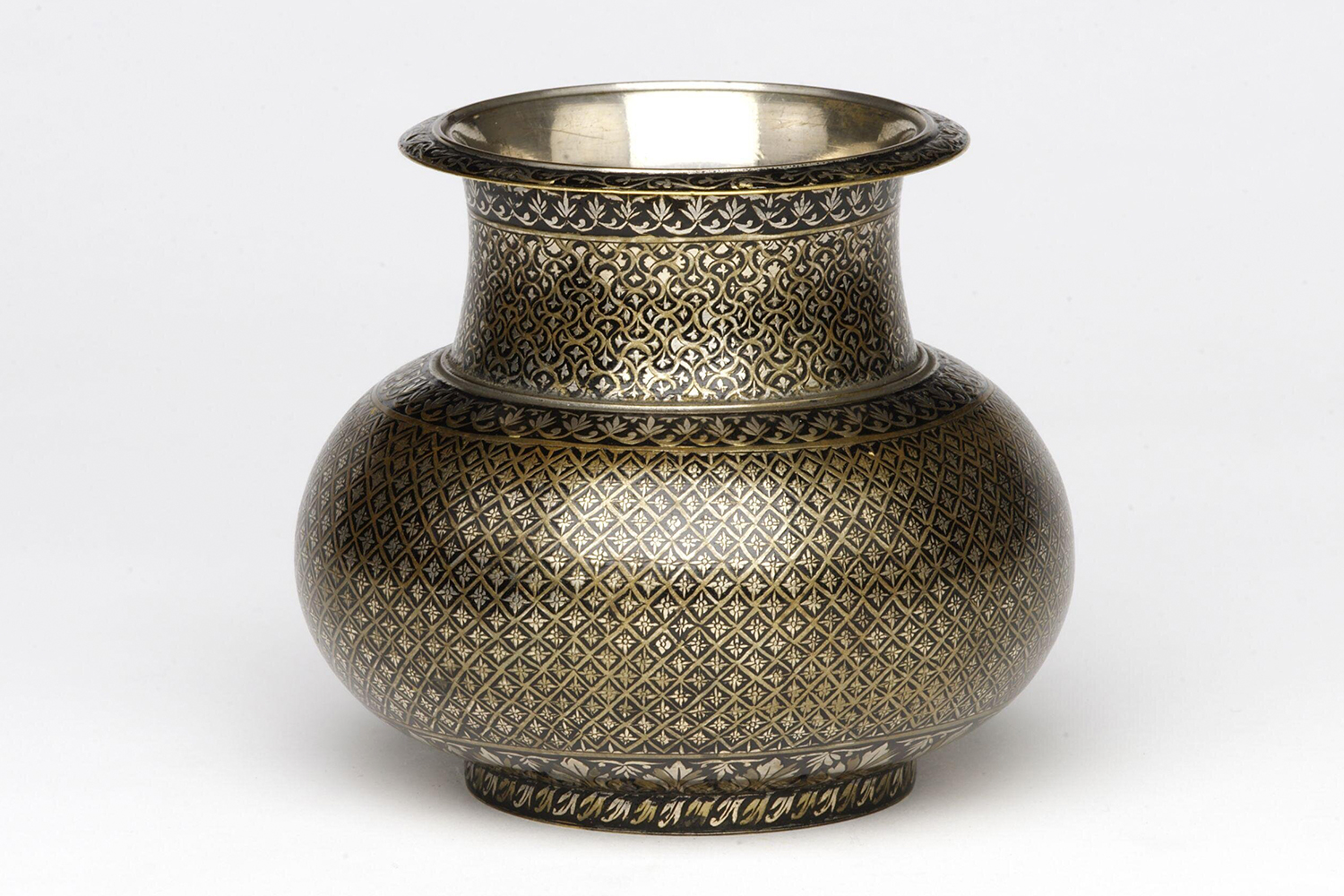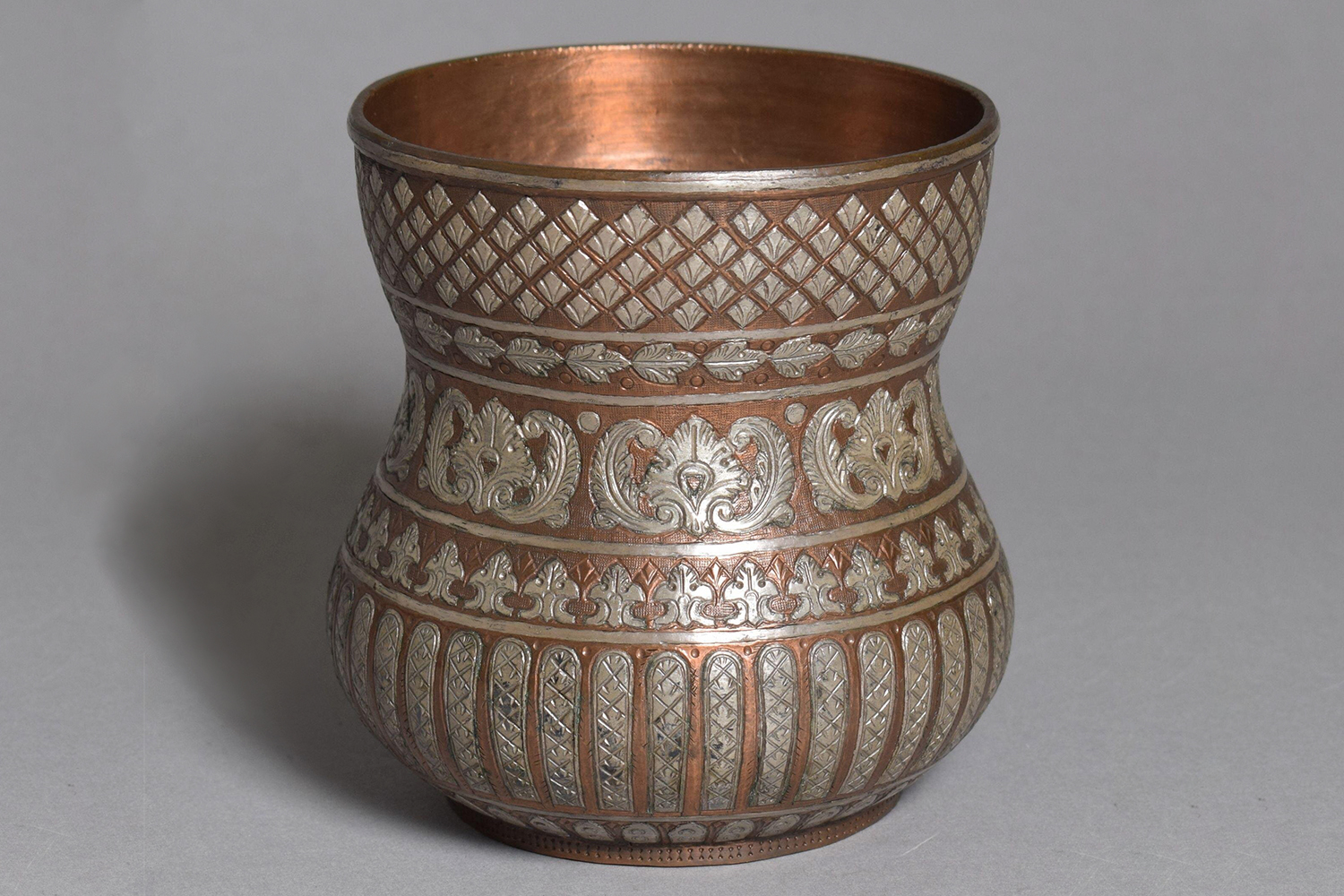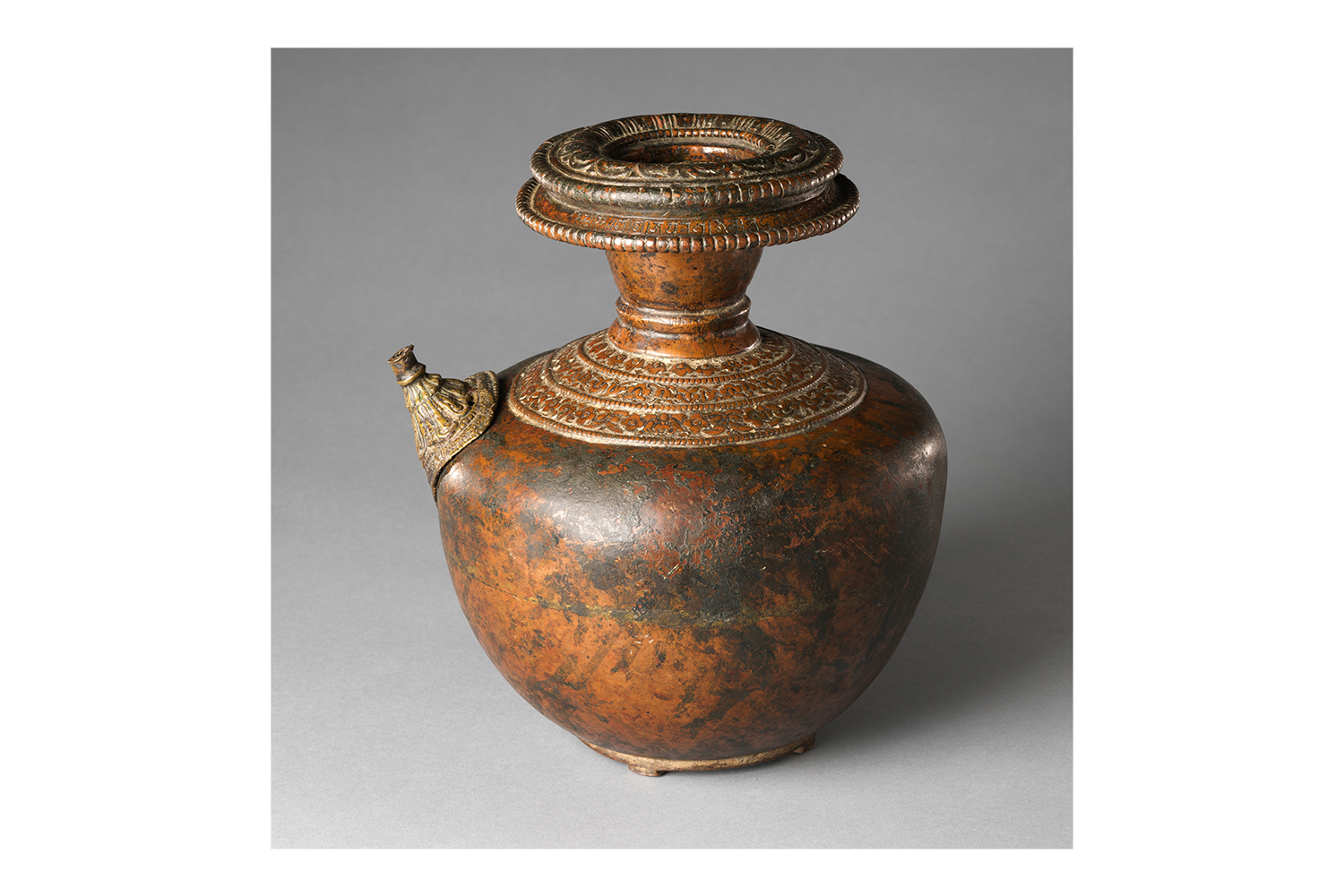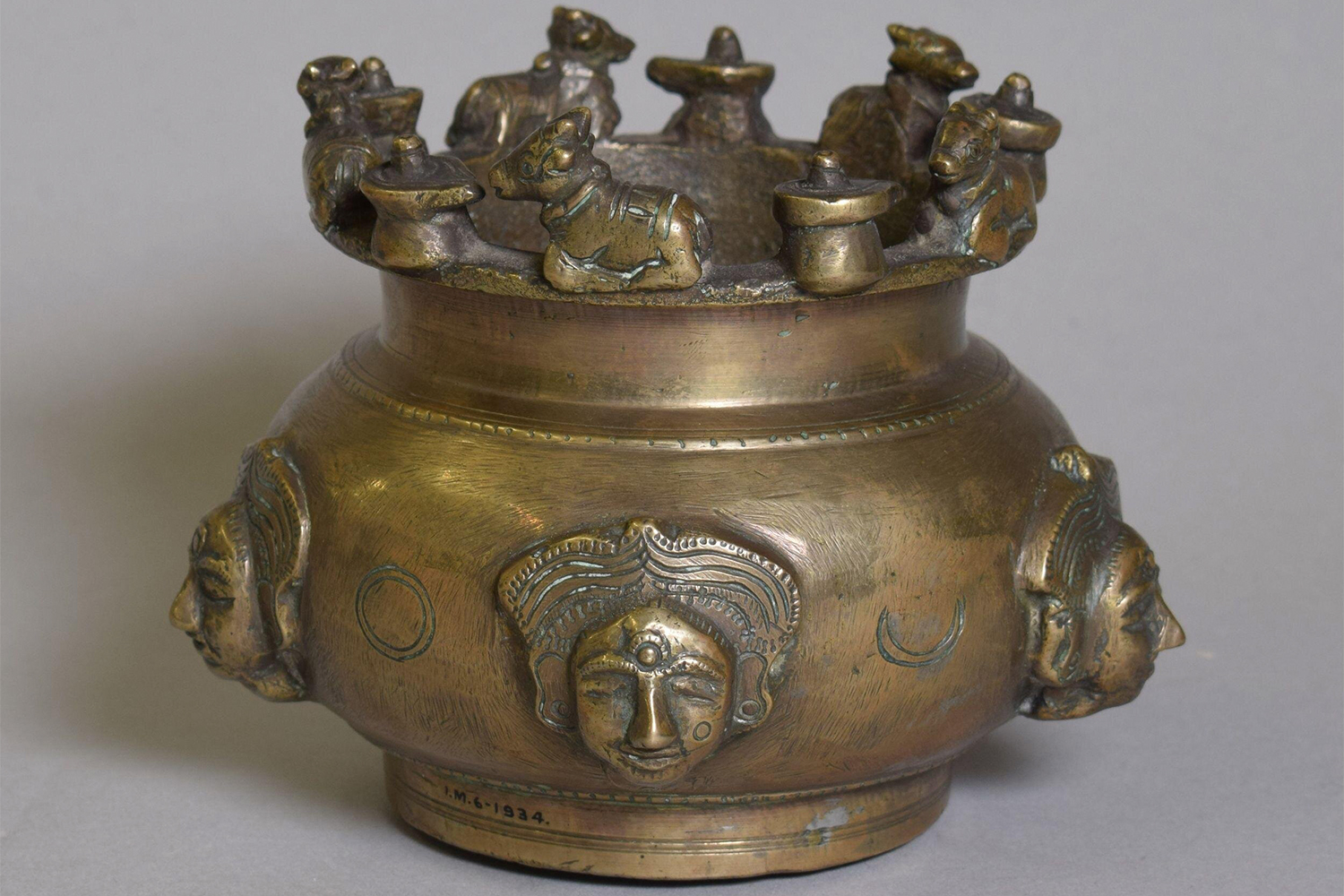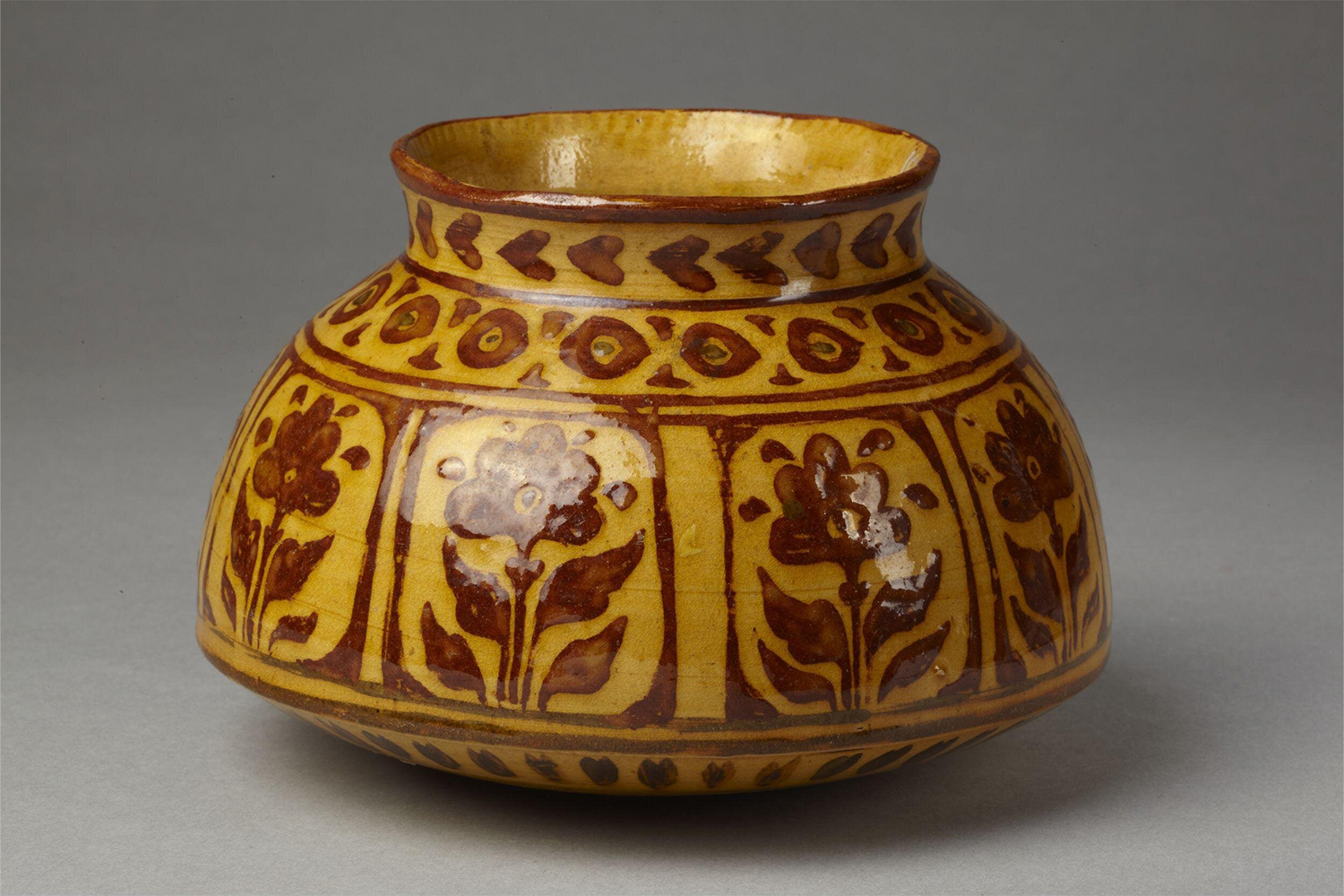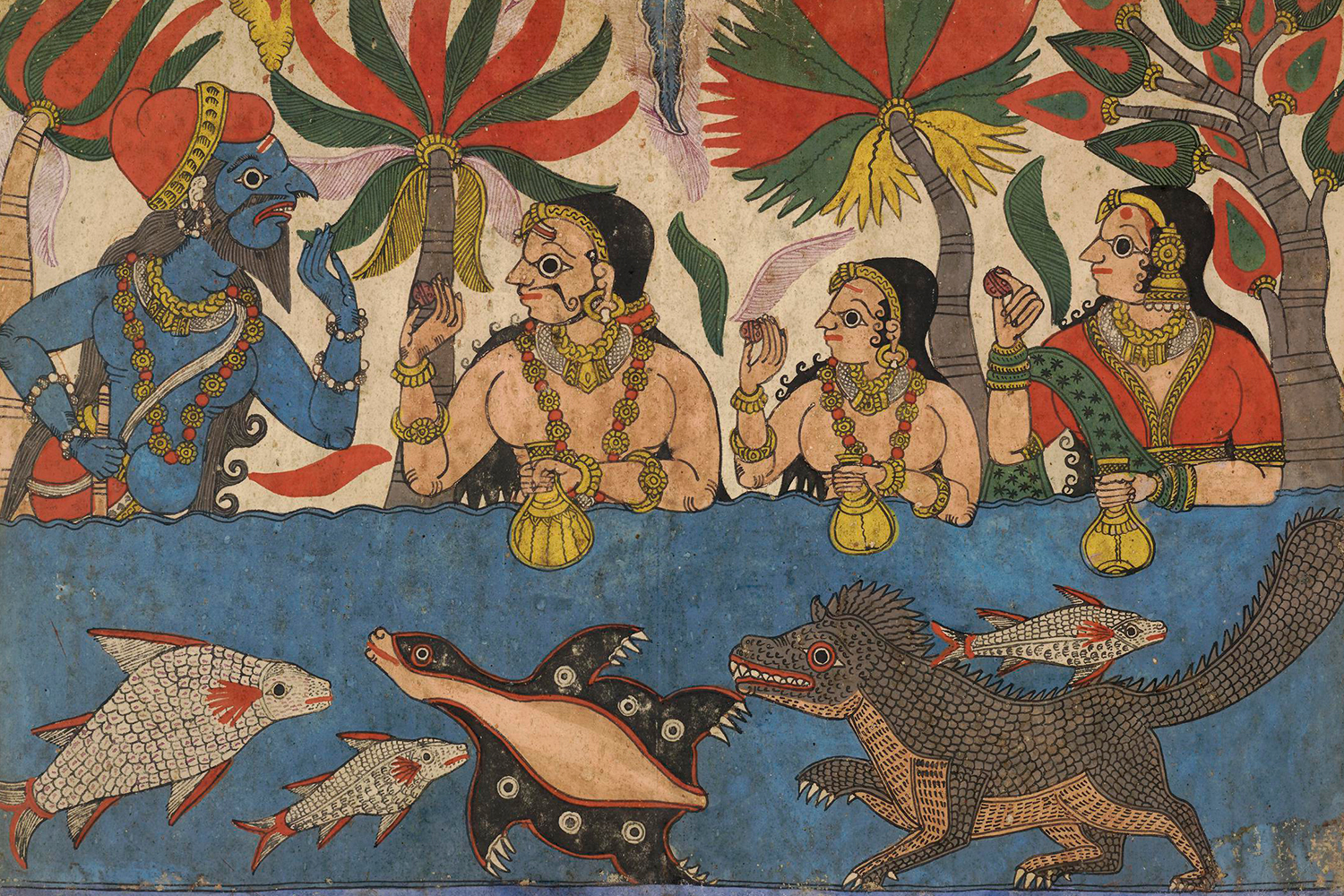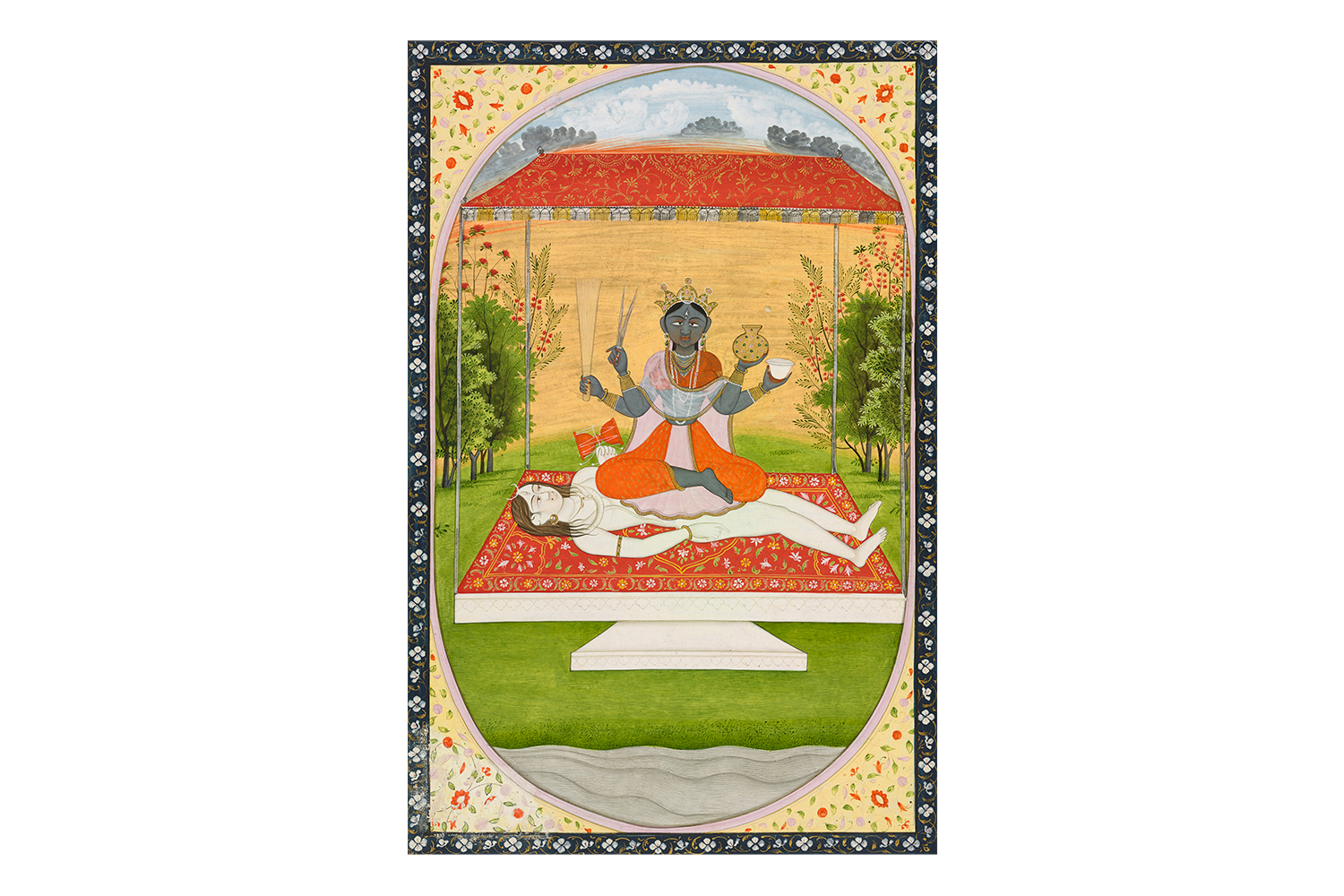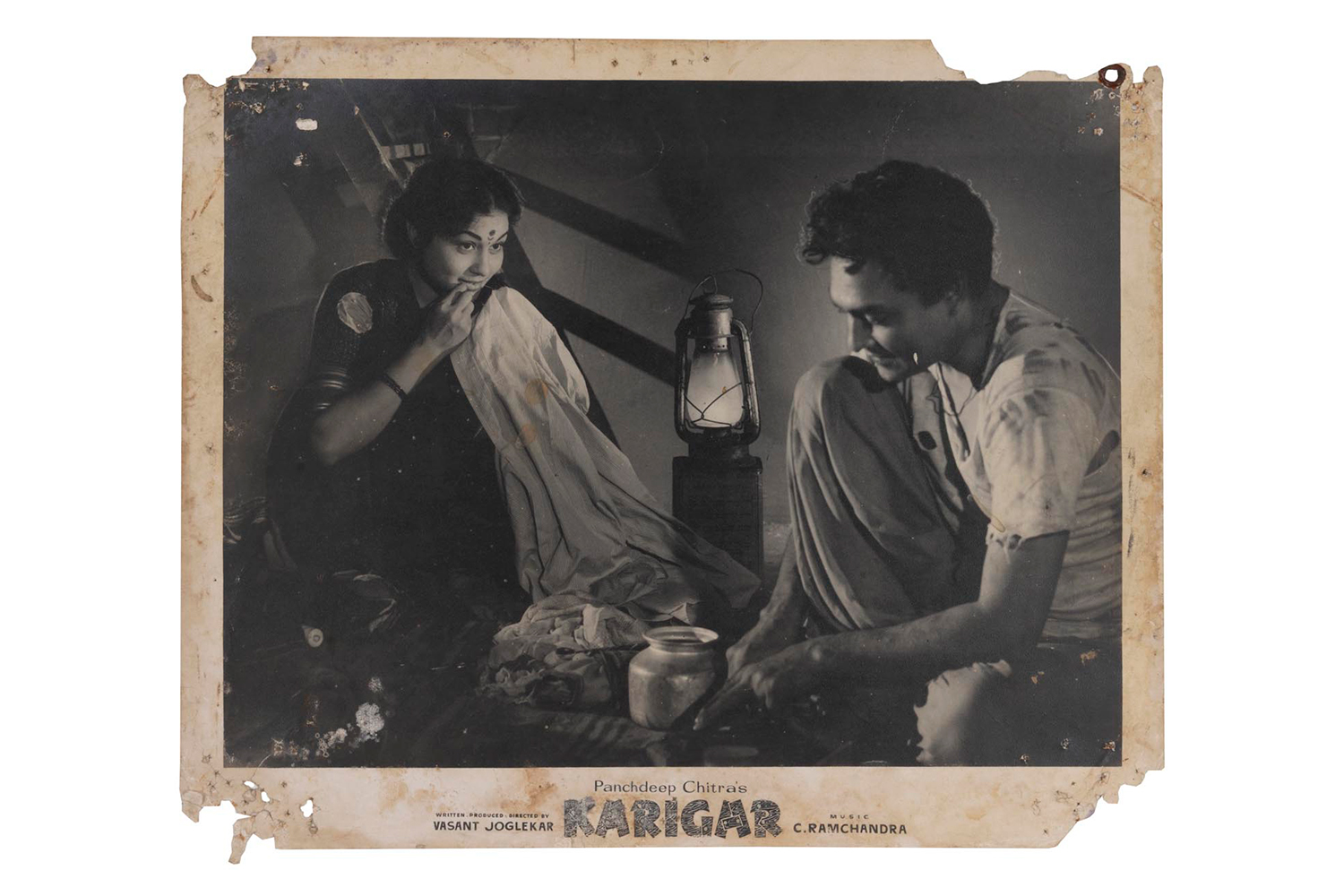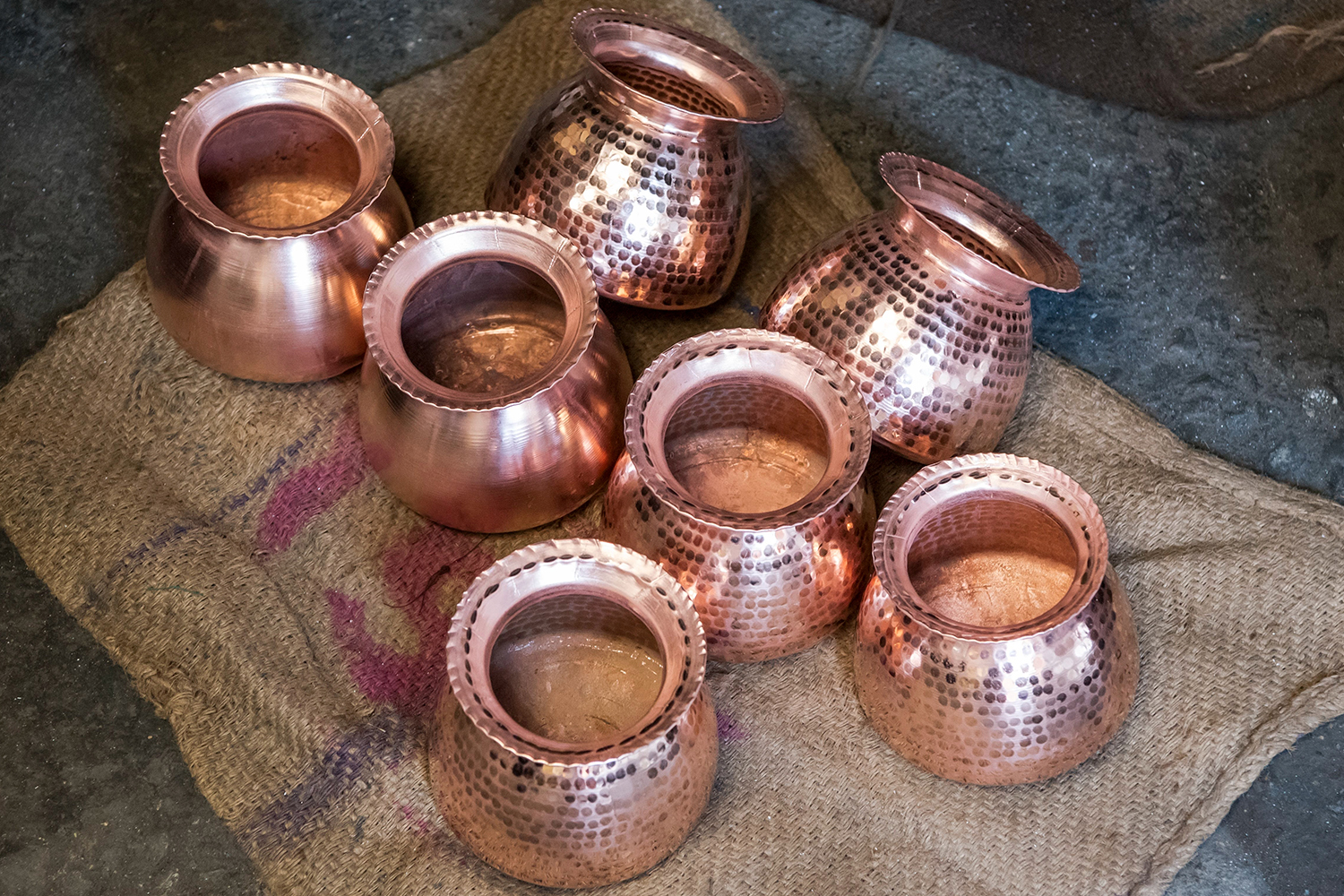ARTICLE
Lota
A distinctive handheld vessel with a round body, constricted neck and flared circular mouth, the lota has been used for centuries throughout the Indian subcontinent to serve and pour water. Besides drinking, the lota is used for ritual purposes and for ablutions, and ranges in its surface decoration from plain to ornate. Traditionally made of brass, it has been used by people across classes and religions, varying in shape, size and decoration across regions. It is known by various names, such as karuwa in Nepal, bodna or kolshi in West Bengal, kindi in Kerala and Tamil Nadu and chembu or chambu in Andhra Pradesh, Telangana and Karnataka — some of which refer specifically to a spouted variant.
Lotas, or similar vessels, made in terracotta form some of the most commonly found archaeological artefacts in Harappa (in present-day Pakistan) and central India, dating between 2400 and 1200 BCE. In excavations at Harappa, they have frequently been found next to toilets within homes, attesting to their use in personal hygiene for millenia. Pottery traditions contemporaneous with the Mature and Late Harappan phases such as the Kayatha and the Malwa cultures have also revealed such forms. These constitute a majority of the Black-on-Red Ware pottery specimens distinct to the region of Malwa in western and central India.
Thought to be modelled on globular fruits like gourds and mangoes, as well as the lotus, the form of the lota comprises a round, bulbous body with a short neck that flares sharply into a wide, round mouth with a flat rim to facilitate pouring. It is provided with a flat bottom to allow it to be placed down, while the neck makes it easy to hold and carry. The lota is found in various sizes and shapes based on its intended function, ranging between roughly 10 to 20 centimetres in both height and diameter. While some have an almost completely spherical body, others are narrower towards the bottom; variations are also seen in the angle of the neck and the width of the rim. Some versions also incorporate additional fixtures such as handles and tubular spouts.
The lota’s design has enabled it to be widely used for a range of purposes that involve carrying, scooping and pouring water — from drinking to washing the body, hand-washing clothes, as well as for rituals and ceremonies. In pujas or religious ceremonies, particularly in Hindu cultures, it is used for holding and pouring holy water, often in the washing of idols. In such contexts, its form and symbolic function closely parallel those of the similarly shaped kalasha, which has deep religious significance and appears widely in iconography and architecture in many South Asian cultures.
Some historic specimens of the lota, today housed in museum collections, show intricate surface embellishment and a skilful combination of materials, reflecting royal or other wealthy patronage. The patterns are achieved using a range of techniques including engraving, inlaying, and chasing (embossing using a hammer). Silver, or more commonly copper, may be applied onto a brass lota, and the copper-brass combination is often known as Ganga-Jamuna, after the contrasting colours of the two rivers at their point of confluence. Some gilded examples have also been found. Both abstract and figurative designs are seen. Abstract shapes and patterns may be free-flowing or geometric, the latter potentially illustrating Islamic aesthetic influence. Figurative designs comprise natural motifs such as plants and flowers, animals such as fishes, birds, deer, elephants and lions, human figures and even gods or sacred symbols. The body of the vessel typically displays large spacious designs, while the neck and the base are worked all around with bands of intricate patterns.
In 1958, the lota received special recognition by the American industrial designers Charles and Ray Eames. Invited by the Government of India to make recommendations for an appropriate course for Indian design education, they toured diverse centres of design and manufacture in the country, making observations and engaging in discussions. In The India Report, which they published as a culmination of their study, they cite the ubiquitous lota as an example of great design, which exemplified the perfect synthesis of form and function. They recognised that such an object could not have been designed by one person alone, but had been collectively shaped by generations of users. They recommended a course of training that would foster a socially oriented design sensibility that would facilitate the generation of such solutions for the newly independent country’s challenges. The National Institute of Design in Ahmedabad was established three years later on the basis of these recommendations.
Whilst brass is still used in manufacturing lotas today, stainless steel, iron and aluminium are more common. The lota continues to be used in temples and households for ritualistic purposes, while its use in personal hygiene is generally restricted to rural areas. Plastic mugs, used in conjunction with plastic buckets have largely replaced the traditional lota in the latter context.
Bibliography
Eames, Charles, and Ray Eames. The India Report. Ahmedabad: National Institute of Design, April 1958. http://echo.iat.sfu.ca/library/eames_58_india_report.pdf.
Lahiri, Nayanjot. “Some Ethnographic Aspects of the Ancient Copper-Bronze Tradition in India.” Journal of the Royal Asiatic Society 3, no. 2 (July 1993): 219–231. https://www.jstor.org/stable/25182702.
Mathur, Saloni. “Charles and Ray Eames in India.” Art Journal Open, May 29, 2011. Accessed October 17, 2023. http://artjournal.collegeart.org/?p=1735.
The Metropolitan Museum of Art. “Water Container (Ganga-Jumna Lota).” The Collection: Islamic Art. Accessed October 17, 2023. https://www.metmuseum.org/art/collection/search/444557.
Miller, Daniel. Artefacts as Categories: A Study of Ceramic Variability in Central India. Cambridge: Cambridge University Press, 1985.
Phillips Antiques. “Lota.” Accessed October 17, 2023. Artefacts: Brass Objects: Lotas. https://phillipsantiques.com/product/lota-3/.
Sankalia, H. D., Z. D. Ansari, and M. K. Dhavalikar. “Inamgaon: A Chalcolithic Settlement in Western India.” Asian Perspectives 14 (1971): 139–46. http://www.jstor.org/stable/42927752.
Singh, Upinder. A History of Ancient and Early Medieval India: From the Stone Age to the 12th Century. India: Pearson-Longman, 2008.
The Victoria and Albert Museum. “Lota.” Collections. Accessed October 17, 2023. https://collections.vam.ac.uk/item/O79125/lota-unknown/.




